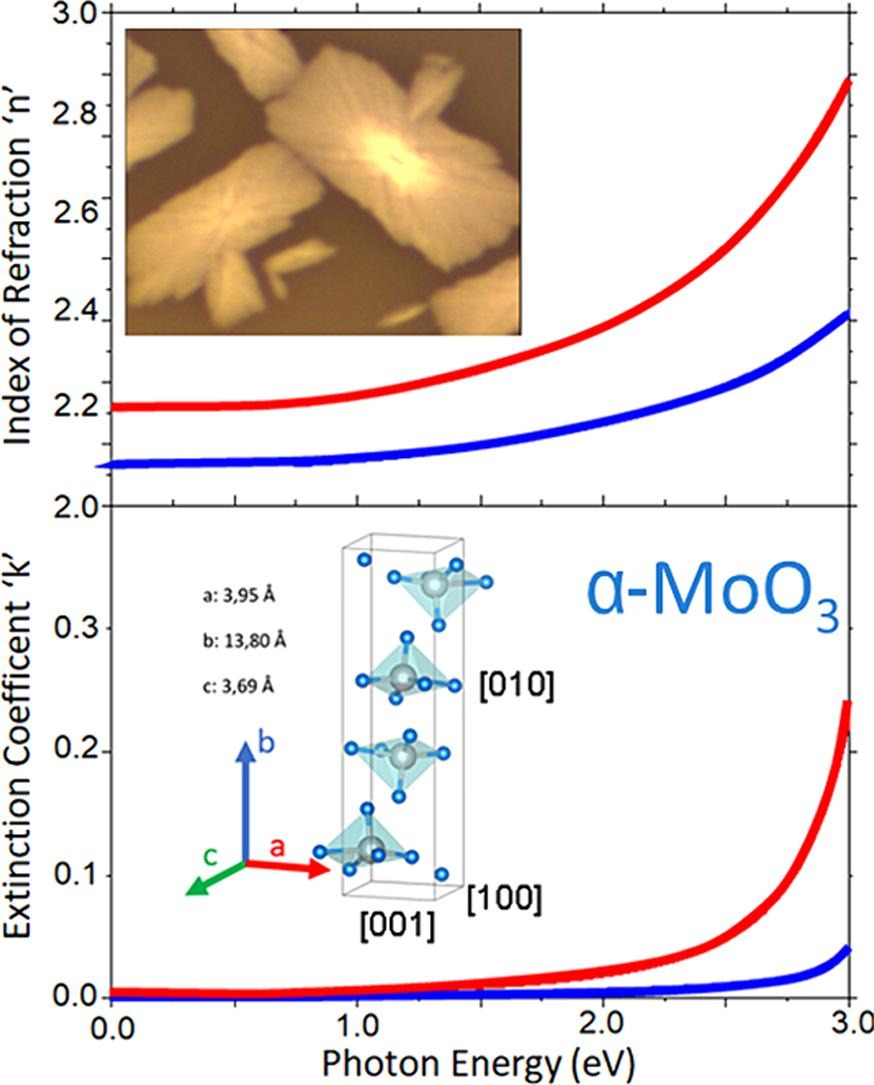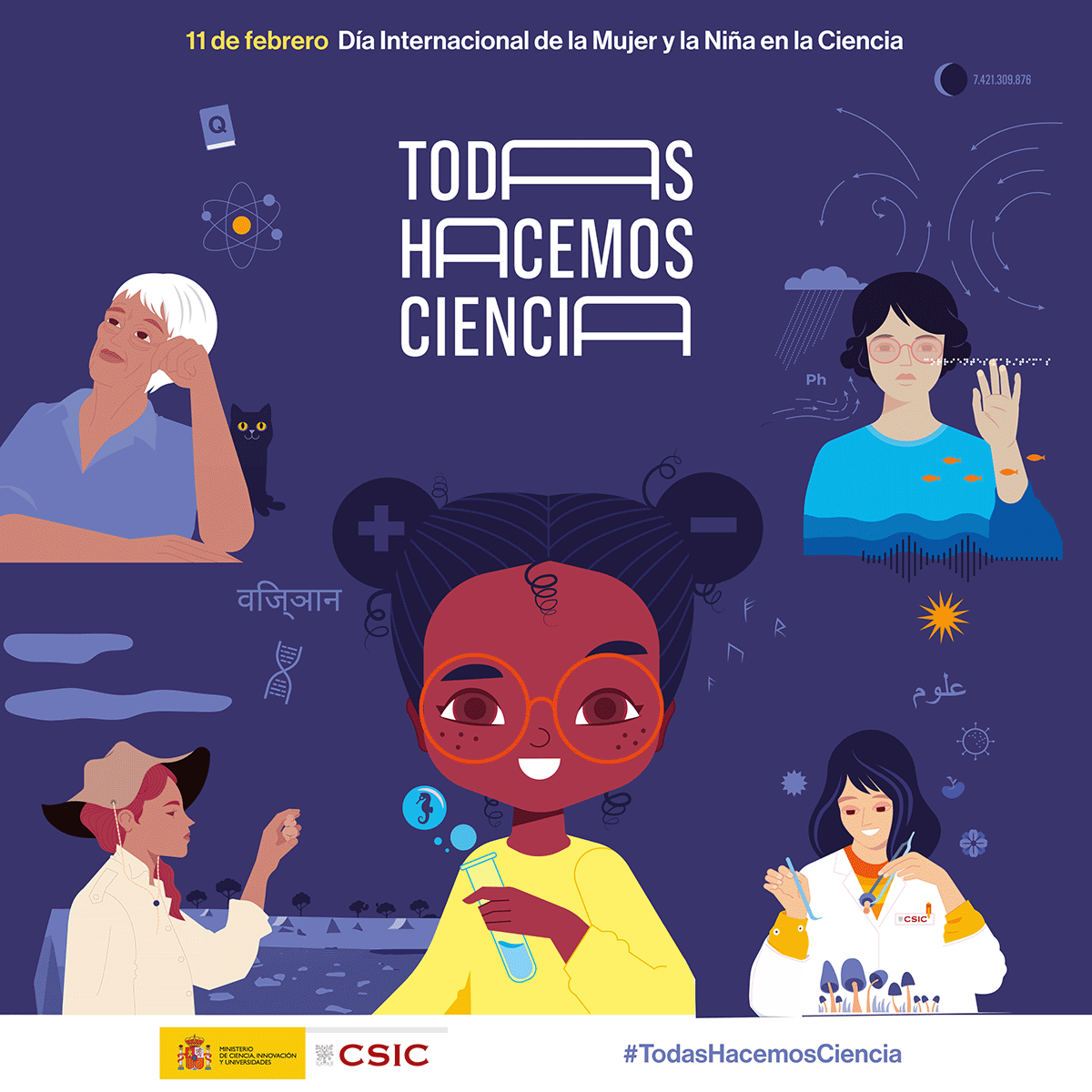Building nanoplatelet α-MoO3 films: A high quality crystal anisotropic 2D material for integration
-
A technique has been developed to produce large 2D α-MoO3 nanoplatelets perpendicular to the film surface.
-
This layer of nanoplatelets collectively forms a dense network that exhibits anisotropy, which is different properties depending on different directions of incident light.
Madrid / August 20, 2024
Researchers from the Laser Processing Group of the IO-CSIC, the Complutense University of Madrid, the Polymer Institute of the CSIC and the Institute of Physics of the Czech Academy of Sciences have published a study in the journal Applied Surface Science, where they present an innovative methodology for the creation of a uniform film of α-MoO3 nanoplatelets in which all the nanoplatelets are “standing upright” on the surface of the sheet where it has been formed. This material, which is very transparent and has optical anisotropy (different response to light depending on the direction from which it falls), enables advances in the development of next-generation photonic and optoelectronic devices.
Latest news
In this work, the team’s researchers have managed to develop a manufacturing technique that allows the creation of ultra-thin films made up of a dense network of α-MoO3 nanoplatelets, with excellent uniformity (all the nanoplatelets have the same size) and with control of the crystallographic orientation. These films, thanks to their properties in the visible spectrum of light, open up new possibilities for the integration of this material in multilayer chip devices in the field of nanophotonics.

The research team plans to carry out further work along this line to achieve the formation of a multilayer structure in the future, which will also have applications in the design of future integrated optical and optoelectronic devices.
Molybdenum (Mo) in nature is an element with a concentration of 1.5 ppm in the continental crust and 10 ppm in the oceanic crust, where it is more abundant. This element appears as a by-product of copper and silver mining. However, molybdenum is more common than other elements currently used in device manufacturing, so it is considered a sustainable material.
Article: E. Nieto-Pinero, S. Negrete-Aragón, I. Muñoz Ochando, M. Vondráček, B. Galiana, R.J. Pelaéz, B. Maté, S. López-Andrés, R. Serna “Building nanoplatelet α-MoO3 films: A high quality crystal anisotropic 2D material for integration”. Applied Surface Science Volume 6721 Article number 160871
IO-CSIC Communication
cultura.io@io.cfmac.csic.es
Related news
The Institute of Optics joins the celebration of 11F
Full and equal access and participation of women and girls in science and technology Madrid / January 31, 2025In recent decades, the international...
Optoplasmonic tuneable response by femtosecond laser irradiation of glass with deep-implanted gold nanoparticles
Ion implantation of Au2+ at MeV energies has enabled the creation of nanoparticles embedded at greater depth, resulting in a Fabry-Perot cavity...
On November 20th, David Grojo from CNRS will give a lecture entitled “New Dimensions Open to Ultrafast Laser Material Modifications”
Madrid / November 13, 2024On Wednesday, November 20th at 11:30 a.m. we will have a seminar organized by the Laser Processing Group in the conference...




